We independently review everything we recommend. When you buy through our links, we may earn a commission.
Ever wondered the difference between the various running shoe foams? Well, you’ve come to the right place! We’re going to simplify it all and help you understand why it’s important to know when buying. It impacts feel, efficiency and durability, all hugely important factors.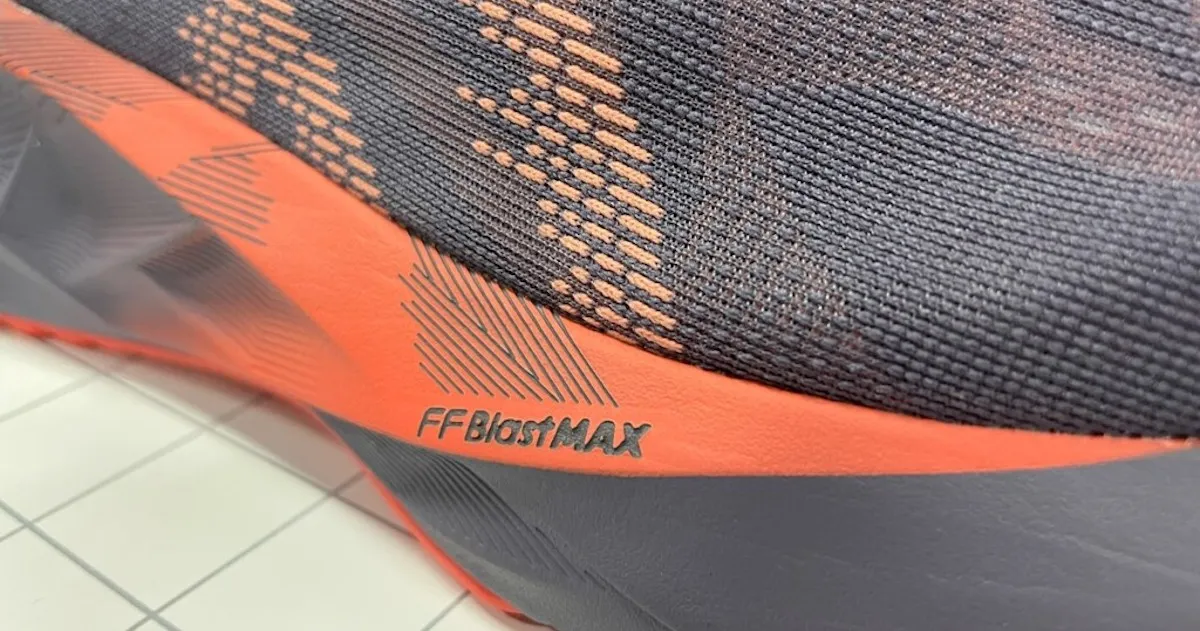
Nike ZoomX. Asics FF BlastMAX. Adidas Lightstrike Pro. Saucony PWRRUN PB.
These are some of the options you’ll find when you go shopping for a running shoe, but what does any of it actually mean?
Each claims to have a midsole filled with a foam that’s the perfect amount of softness, has amazing resilience, and is durable. In fact, a lot of their claims sound the same across different types of foam for the same brand!
So what really separates them? How are they different? Is one cushion actually superior to another? Or is every brand just very good at marketing?

Understanding Running Shoe Foam 101
“How different are these running shoes really?” is a complex question with a lot of technical jargon involved. Our goal is to breakdown the cushion component of your shoe, to help you understand what different foams are and how you might take that in to consideration when buying.
The midsole is the portion of your shoe containing the foam. It’s the most noticeable feature when you pull on a shoe (besides the overall fit). Much of the change we’ve seen in running shoes over the last decade has come down to the foam in the midsole.
Why your running midsole matters?
- It’s changes how the shoe feels (super firm, super soft, mushy, bouncy).
- The faster a foam wears down, the faster it changes your gait and means you need new shoes.
- Absorbs load created by the impact of each footstrike, which lessens the impact on the musculoskeletal system.
- Can be part of stabilizing the foot to prevent overpronation.
The first midsoles were made of polyurethane foam combined with rubber soles, and since then, have evolved into the most important part of your running shoe.
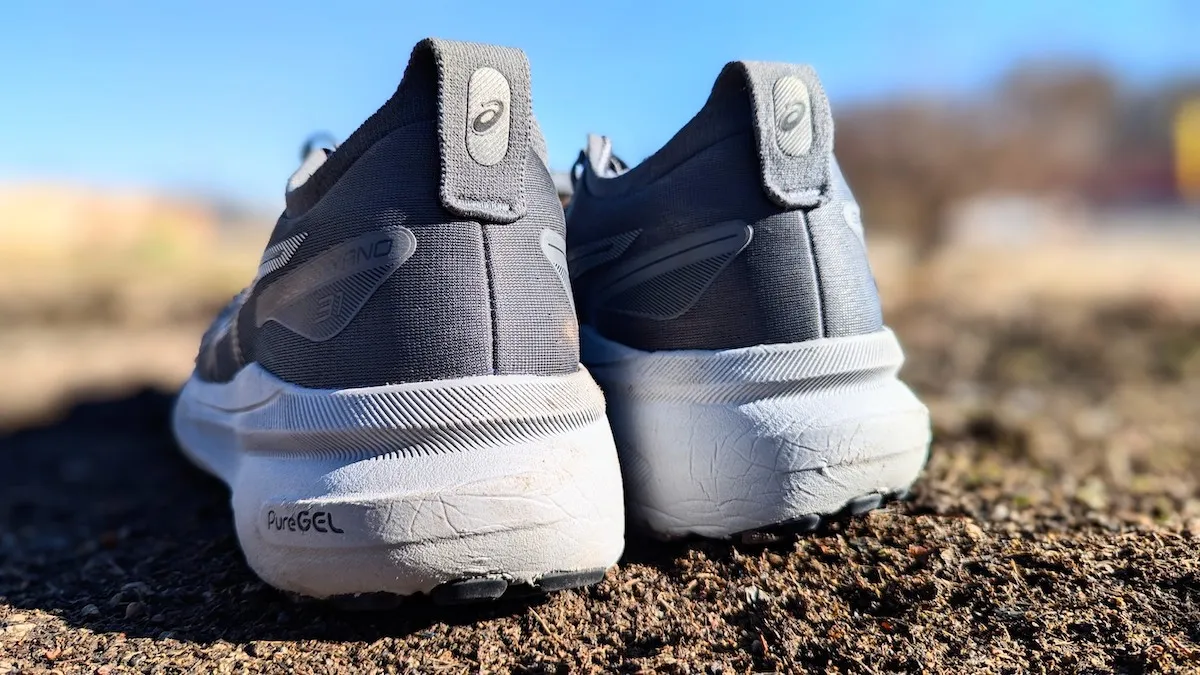
3 Main Types Of Running Shoe Foams
Nike, Adidas, Saucony, and every other brand out there, use three main types of midsole foam. They’re just putting their own small twist on it for labeling. This isn’t to say there aren’t other things going on, but again we’re trying to make a super complex topic easier to grasp.
The 3 main types we’ll compare + an important compound:
- Ethylene Vinyl Acetate (EVA)
- Thermoplastic Polyurethane (TPU)
- Polyamide Block Elastomer (PEBA or Pebax)
- EVA Infused With Nitrogen or Carbon Dioxide (or Supercritical Foam)
While each brand has developed proprietary systems or variations on existing foams – meaning they have blended them in different ways – the base of these foams can still be classified into one of four main types.
Nike’s Vice President Tony Bignell is quoted as saying “you can start with the same eggs, and you can make lots of different omelets. Otherwise all shoes would feel the same way.”
For example, the New Balance FuelCell from New Balance Rebel v4 is 20% PEBA and 80% EVA, which provides good but not the best energy return possible. Compare it with the New Balance Elite v4 which is 100% PEBA foam. This makes it very bouncy and responsive. However, on their product pages both shoes have the same “FuelCell” name/branding, and most runners don’t realize they’re vastly different foams.
Every shoe – even ones made by the same manufacturer from the same type of foam – can wear differently, both on a first wear and a few hundred miles down the line.

Some wish there was more transparency in the industry so that consumers understand exactly what they’re getting. Others don’t see any point in getting bogged down in the chemical compounds included in their trainers.
We believe you’ll learn A LOT from this overview of running shoe foam and it may change how you look at your shoes.
1. EVA | Common Daily Trainer
Ethylene Vinyl Acetate is the most common running shoe foam. It’s going to appear in most daily trainers and even as a blend between other types of foam to help with durability and comfort. In fact, you’ll see some of the higher end shoe like to combine EVA with another type of foam to strike that balance.
This very popular foam is light, with better cushioning effect than polyurethane. It’s elastic, meaning a decent return of energy discharged to the ground and relative restrained dispersion.
The energy return in a running shoe is a measure of how much energy can be stored in the shoe and then returned to the runner.
Good energy return means a springy feeling in the sole, a reduction of strain on the legs, ankles, and feet, and helps the wearer sustain higher intensity exercise levels for longer.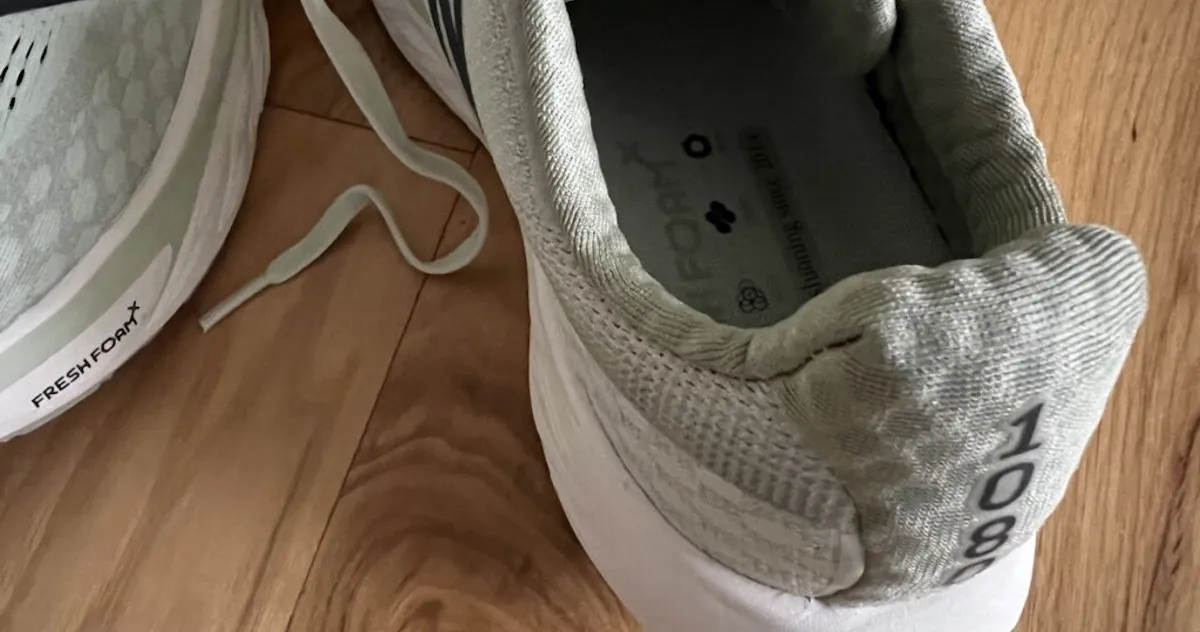
Pros
- No recovery time for energy return, meaning the shoes don’t need to “rest” after a workout before they’re ready to go again.
- Good shock absorption, which eases the strain on joints and muscles.
- The most durable of the modern midsole foams.
- Lower price point, making them a popular choice for daily trainers.
Cons
- Low energy return (60-65%)
- Sensitive to temperature changes
Different brands that employ EVA will alter it chemically, such as the way Asics’ Flytefoam includes nanoparticles to make it lighter and more responsive.
What you’ll notice from the list below is that this one foam can have a wildly different feel in a running shoe based upon the amount used and the way it’s formulated. None of these are going to have the bounce of a PEBA shoe, but can feel firmer or softer than another with EVA foam.
Here’s where it gets interesting and what we’re seeing a lot of: mixing foams.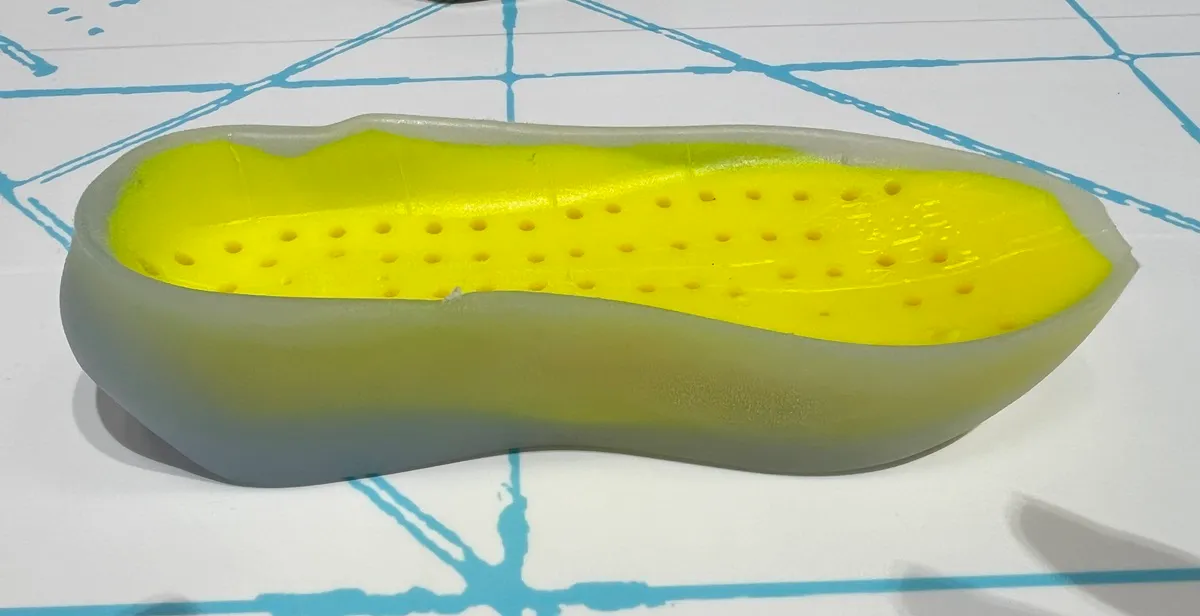 For example, brands like Brooks are using a new model that allows them to put a firmer feeling foam outside and then inject the softer EVA in the middle. The result is a shoe that feels really soft, but is more duarble and more stable.
For example, brands like Brooks are using a new model that allows them to put a firmer feeling foam outside and then inject the softer EVA in the middle. The result is a shoe that feels really soft, but is more duarble and more stable.
All of which makes it easier to keep boosting that stack height! And is required when they boost that stack height, so you don’t sink right down to the ground in just something super soft.
EVA foam examples: Brooks DNA foam, On Helion, Asics FF Blast, and New Balance Fresh Foam.
Popular EVA cushioned shoes: Hoka Clifton, Hoka Bondi, On Cloudmonster, Saucony Kinvara, Asics Novablast, Brooks Ghost, Brooks Glycerin, New Balance 1080 , and more.
2. TPU | Most Durable, but Heavy
Thermoplastic Polyurethane is a foam that bonds cells together through heat. Adidas helped develop the compound in 2013 and it’s formally known as “Boost.”
At the time it was seen as a massive game changer because it provided more energy return than EVA, but was still durable. In fact, these are the shoes where we see folks getting over 500 miles or find that they provide great shoes for heavier runners because of the durability.
It weighs more than modern foams, but because of its superior durability, some brands are still using modified versions. The most notable shoe using it is New Balance FuelCell Super Comp Trainer. It’s taking an EVA and TPU blend to help give you that durability often lacking in a super shoe…we expect more of this.
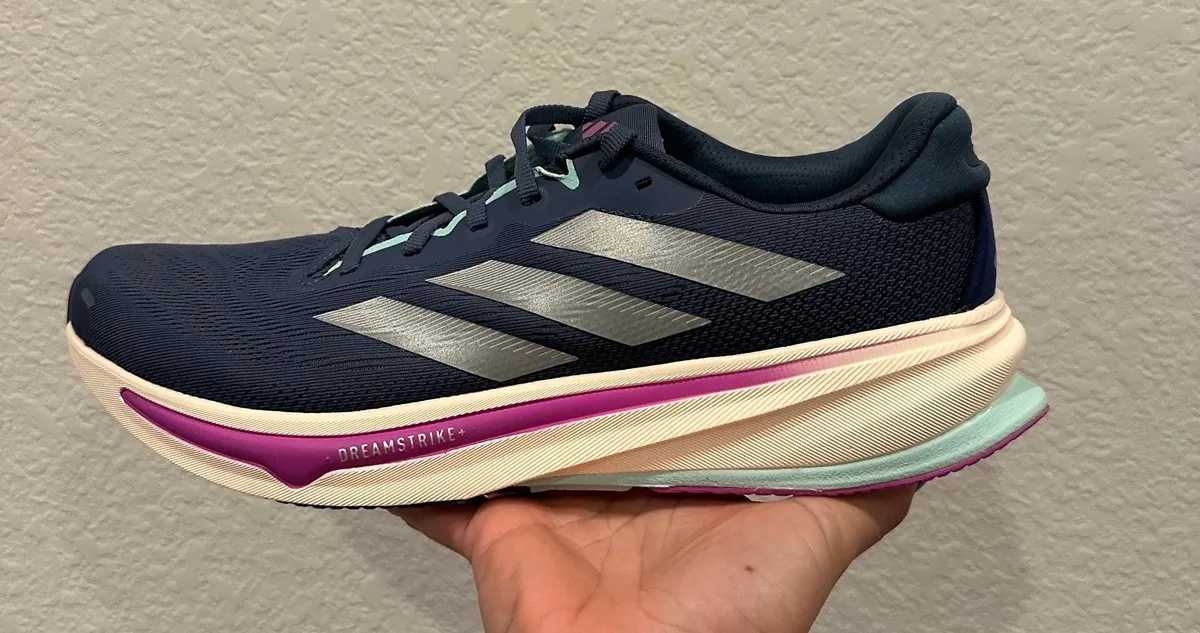
Pros:
- Better energy return (70-75%)
- Decently durable, even in varying temperatures
- More comfortable than EVA
- Reasonable price
Cons:
- A heavier shoe on the whole
TPU foam examples: Adidas Boost, Saucony PWRRUN+, and New Balance Fuel Cell
Shoes using TPU cushion: Saucony Echelon, Adidas Ultraboost, Adidas Supernova Rise, and Sketchers GOrun Razor.
3. PEBA: Super Shoe Foam
Polyamide Block Elastomer, also called PEBAX sometimes, has been used in the rigid form for shoe supports for years, but in 2016 a French chemical company called Arkema discovered how to turn it into a foam. This was a game changer in running foam as it’s bouncier and more responsive than those we’ve previously mentioned.
The Nike’s Vaporfly Elite was the first to employ it in a running shoe, calling it “ZoomX.” It really caught everyone’s attention with the first Vaporfly, as suddenly there was a shoe offering almost 90% energy return!
So yes, the carbon plate matters, but only because it’s being combined with the right foam.
As you might guess, this is what we’re seeing the carbon plated shoes with a higher price tag. So that extra bounce comes with a dollar sign.
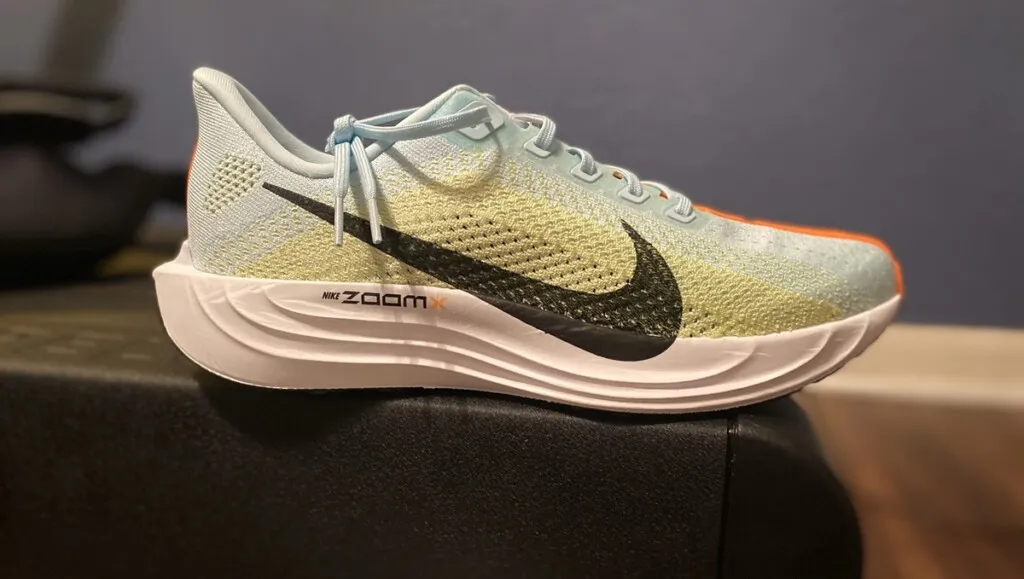
What we are seeing more of now is sandwiching a carbon plate between a top layer of PEBA for the bounce and a bottom layer of EVA for the durability. That’s right…now you’ve got multiple types of cushion in one shoe. This is actually a great thing for your pocketbook!
Pros:
- Extremely light and soft, helps reduce muscle fatigue for longer runs
- High energy return (80-85%) means faster running
- Fairly insensitive to temperature changes so it’s good in summer or winter racing
Cons:
- Durability is much lower, so shoes don’t last as long
- Pricey which means it’s usually in the higher end super shoes
PEBA examples: Nike ZoomX, Saucony PWRRUN PB, and Saucony PWRRUN HG.
Shoes with PEBA foam: Nike Vaporfly, Nike Alphafly, Hoka Rocket X 2, Saucony Endorphin Pro 4, NB Supercomp Elite, and the Mizuno Wave Rebellion Pro.
As noted this foam is what you’re seeing in top end shoes, but also now in some that we call “super trainers”. Which means the version of the shoe you can put more daily miles in likely because it combines foam types to help durability and cost.
A few of those super trainers include the Asics Superblast 2, Hoka Mach X2, Nike Zoomfly 6.
What is Supercritical Foam?
EVA Infused With Nitrogen or Carbon Dioxide, aka supercritical foam, is a mouthful, but remember when I talked about mixing foams? Sometimes they’re combining them with layers and other times they’re trying to alter an existing foam to get a different property.
Chemists made nitrogen and carbon dioxide liquid, then infused the gas into an existing base foam compound, changing it’s mechanical response. I mean it just sounds cool, so no wonder brands are splashing it all over their top end running shoes.
Supercritical foams can be EVA or PEBA depending on which foam they utilized in the process.
AND in an exciting twist, we’re seeing the prices on some of these shoes come down compared to PEBA. It’s not just end your top end race shoe, but appearing in lightweight daily running shoes.
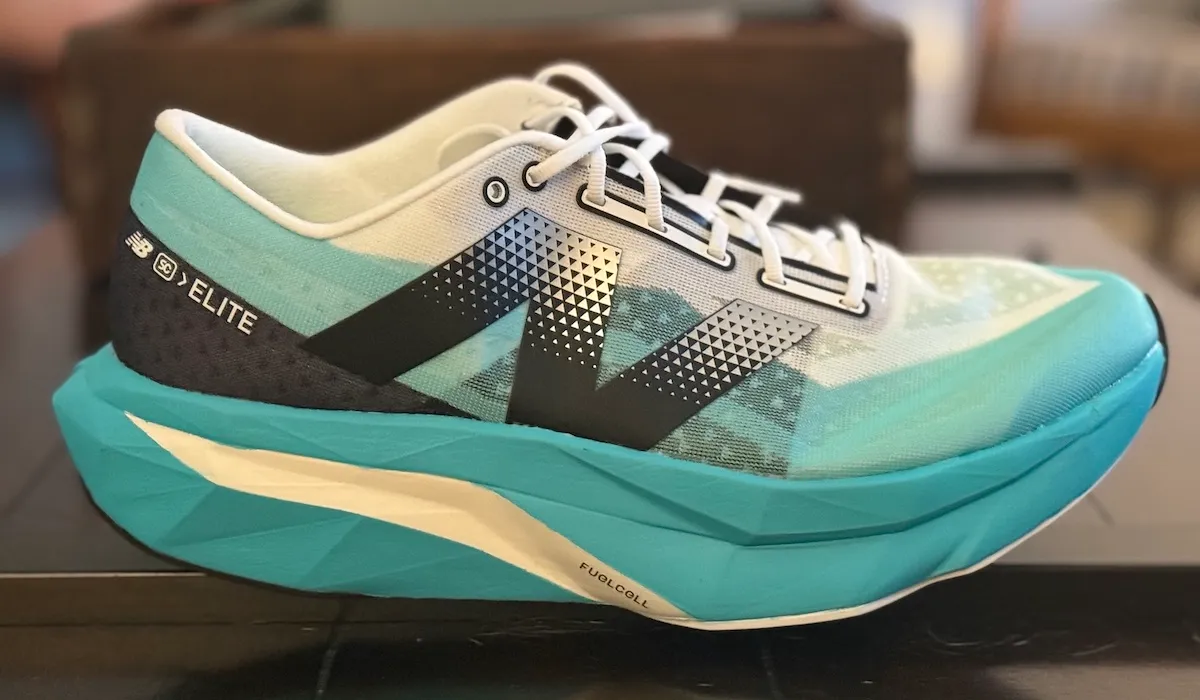
Pros:
- Super light and soft
- High energy return
- Excellent bounce
Cons:
- Traditional has been expensive than EVA or TPU base
- Less durable than TPU or EVA bases alone
- Foam requires 48-72 hours to recharge to promised levels of energy return
Supercritical foam examples: New Balance FuelCell, Brooks DNA Loft, Brooks DNA Flash, Skechers Hyper Burst, and Altra EGO PRO.
Shoes with supercritical foam: New Balance FuelCell SuperComp Elite, Mizuno Neo Vista, Puma Deviate Nitro, Hoka Mach 6, Brooks Hyperion Max, On Cloudboom Strike.
Do We Need Lighter Running Shoe Foam?
What runner doesn’t want a softer shoe that’s lighter? Ok some of you like the firm, that’s why we have so many types of cushion! But what we want to know is does that pricey PEBA foam pay off?
One study found that every 100g of weight impairs “running economy and performance in trained runners”…the findings further support the use of light footwear to optimize running performance.
Leading brands and designers are working hard to figure out how they can reduce weight while maintaining comfort, though there seem to be consistent trade-offs, i.e. lighter-weight foams can decrease stability as the stack height increases.
Or we’ve seen it in so many early carbon plated running shoes feeling really unstable because they became really narrow to drop weight. Not great to run faster, but fall on our faces.
For the average runner will you notice the 1-2 oz difference over the course of a 4 hour marathon, maybe, but unlikely. You’re more likely to notice how the shoe feels underfoot. Did the cushion continue to make your feet feel supported, did the extra bounce reduce some muscle fatigue, are your feet getting enough room to swell in the shoe.
Weight matters, but the feel of the cushion matters more.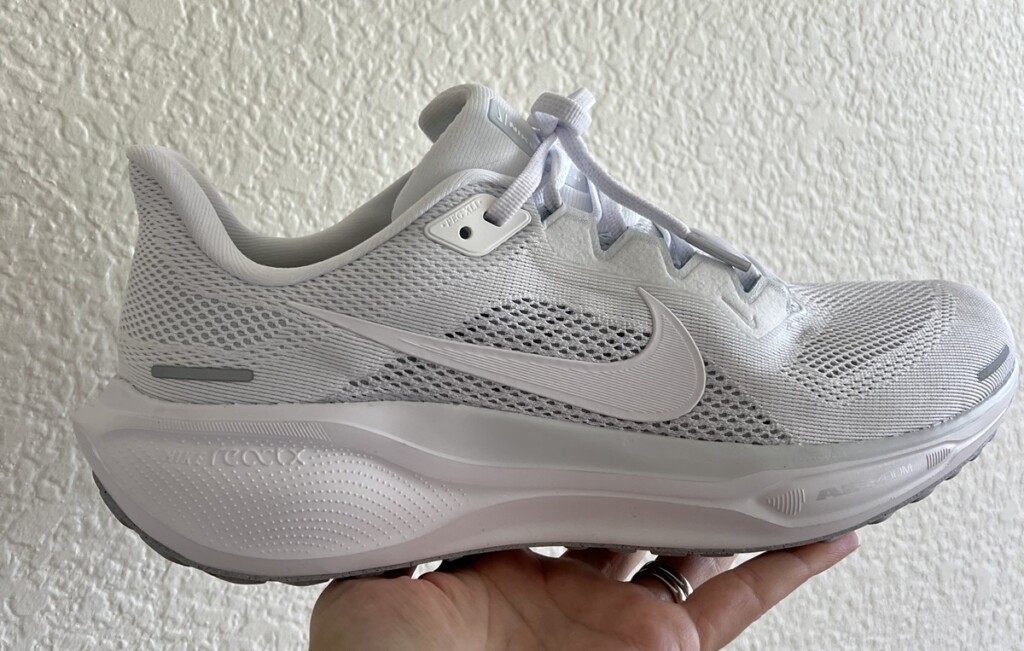
How Stack Height And Foam Play Together
“Stack Height” is “the amount of material between the ground and where the foot sits within the shoe.”
Linked above you can read a whole lot more about stack height, but a quick primer for you. The taller a shoe gets because they are pumping more cushion in to it, the bigger the stack height.
The original Hoka Clifton was 32mm and at the time that was MASSIVE to everyone. Now that’s a super common daily trainer height because shoes are going up to 45mm in the heel to give you that big bouncy, soft ride.
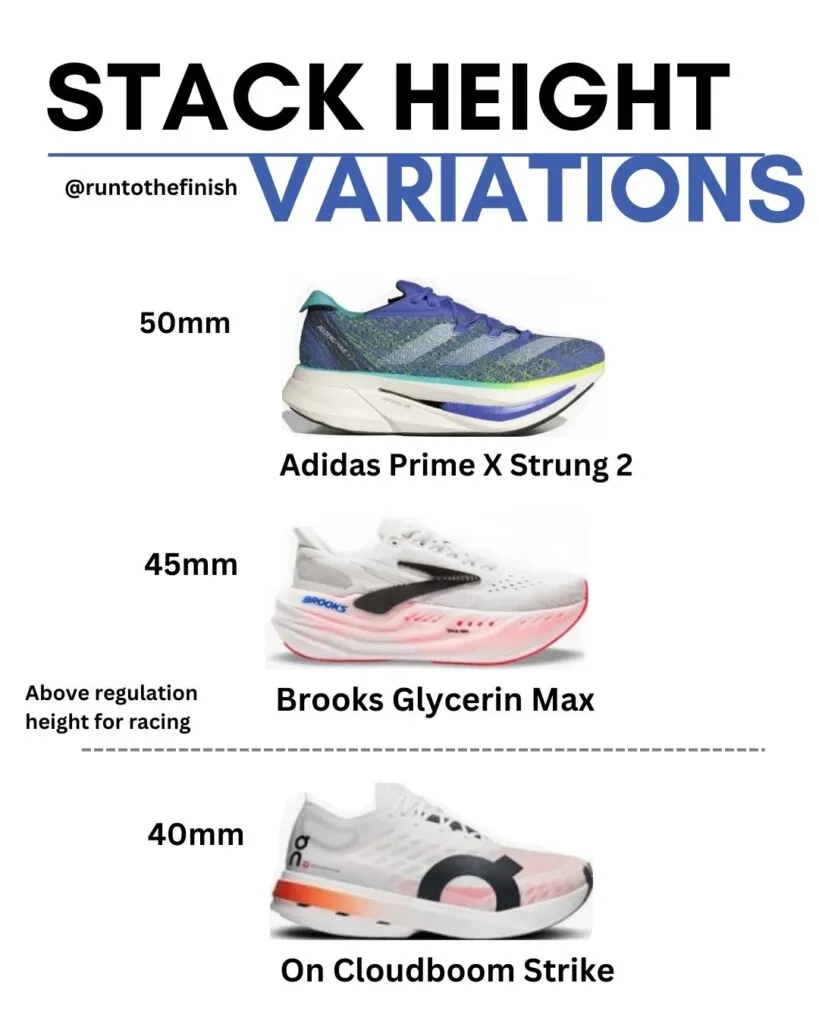
The World Athletics organization has said 40mm is the limit for racing shoes. Which means any athlete racing to win or podium must be in an approved shoe at 40mm or under. The rest of us can run in whatever monster cushioned shoe we want!
Comfort and cushioning is, of course, the reason for stack heights to begin with, but research suggests there’s a limit to how high we can go.
Additional foam adds weight, which impacts its performance. The fact that the shoe is not only taller, means it also needs to be wider for stability, again adding weight.
Some point out that more material leads to a stiffer shoe, which necessitates larger rockers to ease that transition. If the steepness of that curve gets too high, the shoe could begin to feel awkward, uncomfortable, or hard to control.
Never say never, but with existing foam limits, we may see the rush to the “tallest” shoe slow down in the near future.
If and when foam compositions allow for adjustments to the weight issue, that could change.
And of course, some developers are already looking into what might come next, since foams have issues in the areas of both durability and sustainability.
Hopefully this running shoe foam breakdown gave you some new insights and will give you things to ponder when making that next purchase!
Thanks to Trish Leigh on the team for jumping in to help with all the research needed here to give you the skinny.
Other ways to connect with Amanda
Instagram Daily Fun: RunToTheFinish
Facebook Community Chatter: RunToTheFinish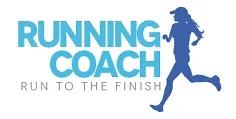
Sign Up to Receive a Weekly Newsletter with Top Running Tips and Laughs

